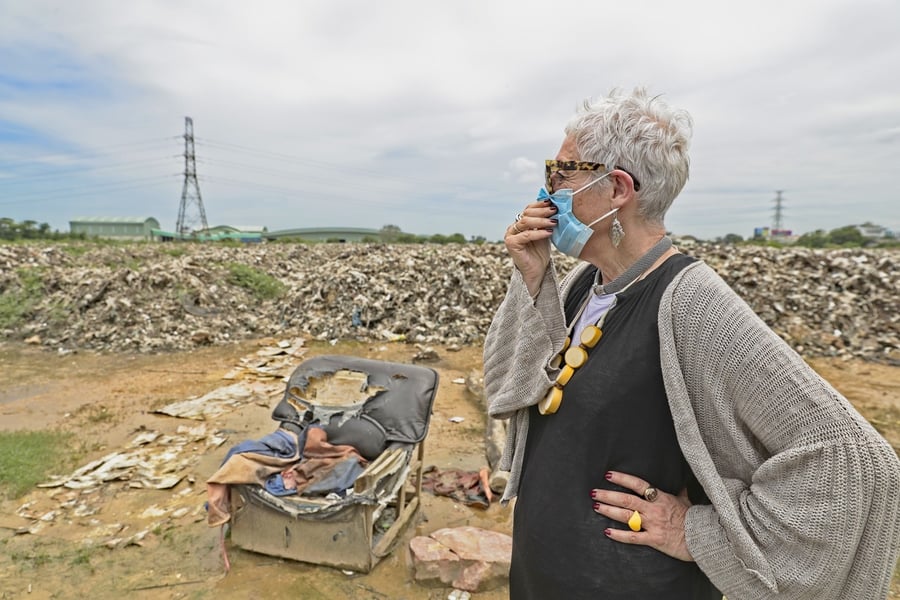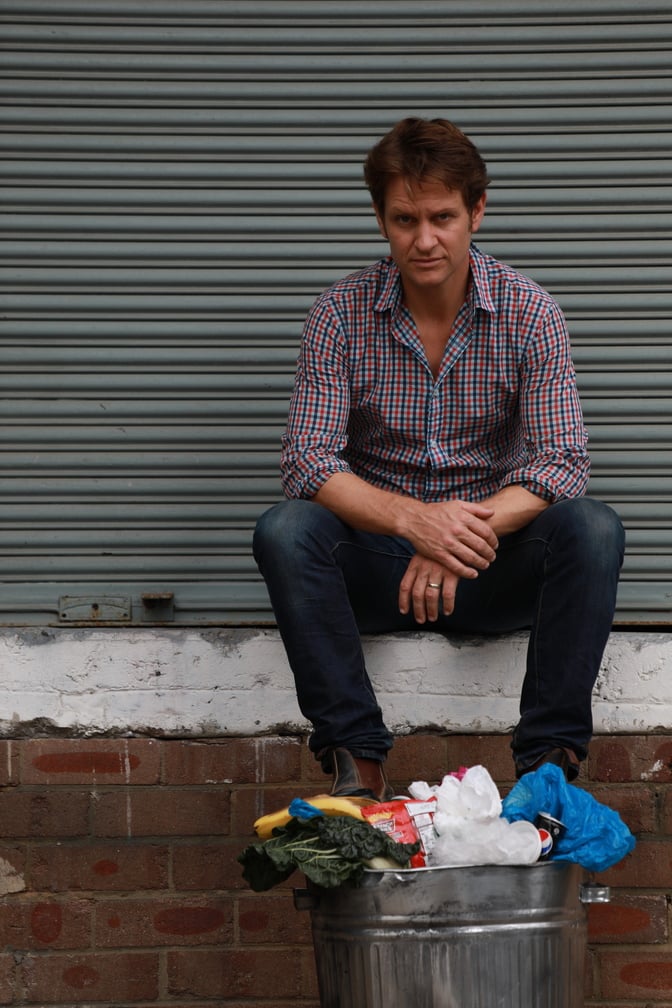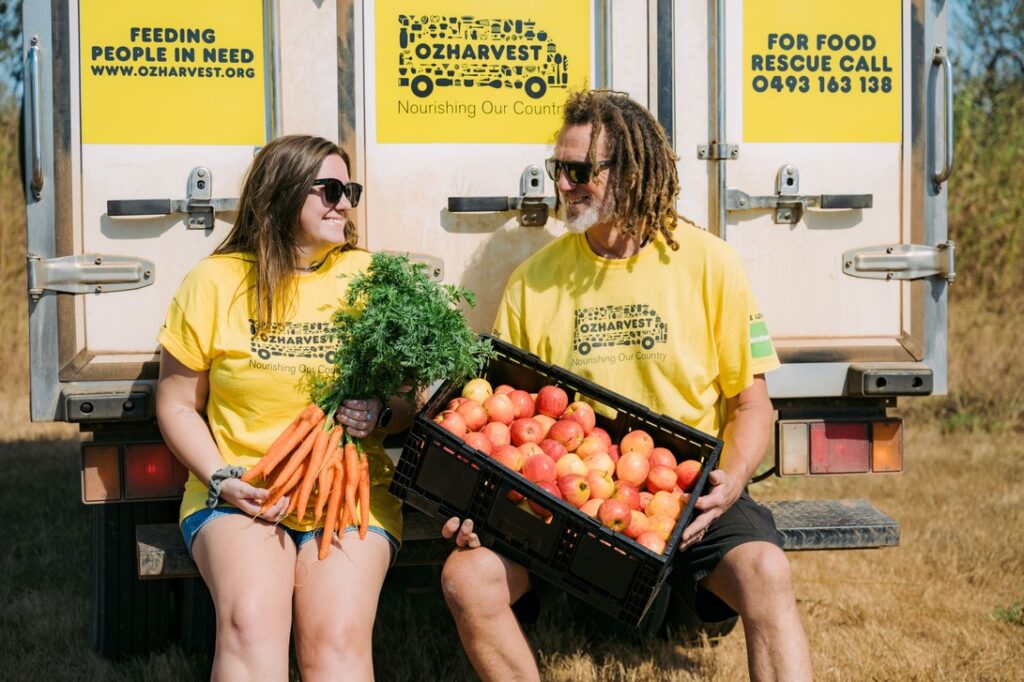One thing no one tells you before becoming a parent is that you will lower your own food standards significantly. As the father of a toddler and a small infant, I’ve eaten food off the floor. I’ve eaten half-chewed scraps. I’ve eaten food off my baby’s face. I’ve eaten questionable cucumbers from the fridge. I’ve picked at leftovers with my fingers while standing over the bin, like a raccoon. If it’s been a busy day, my dinner will literally be whatever my children don’t eat.
Why? Because when you have kids, you’re suddenly confronted with the prospect of throwing out the vast majority of the food that you make, regardless of how long or lovingly you slaved over it. Faced with chucking out hundreds of dollars worth of half-gnawed food, I tend to just eat it with my eyes closed.
But even with me constantly seagulling my kids’ dinner, we still waste stuff in my house. A lot of stuff. And we’re not alone. Every year, Australia wastes 7.6 million tonnes of food — enough food to fill the MCG 10 times over. Enough food to outweigh the Great Pyramid of Giza (5.7m tonnes). Every year, each one of us personally wastes 321kg, which costs the average household between $1,500 and $3,000. Globally we tend to throw out one third of all the food we make. And that’s in a world where one in nine people don’t have enough to eat. If we saved just one quarter of the food we currently waste, we could feed 870 million people. Does this stuff piss you off? It should.
Every year, Australia wastes 7.6 million tonnes of food — enough food to fill the MCG 10 times over.
“Today, in Australia, 3.4 million households need food relief at any point. That accounts for about six million Australians,” says Ronni Khan AO, founder and Visionary in Residence at OzHarvest. “In a country as rich and abundant as ours and wasting this much food, there’s something fundamentally warped going on.”
Love Music?
Get your daily dose of everything happening in Australian/New Zealand music and globally.
Founded in 2004, OzHarvest is Australia’s leading food rescue organisation. It began when Khan herself, an event manager, over-catered a corporate banquet for 1,000 guests. Faced with mountains of uneaten food, she dropped off the leftovers at the only food bank she knew about. And it felt so good, she decided to keep doing it.
Soon Khan had her own “rogue food rescue” van, driving around Sydney and dropping off meals for local charities, which was legally iffy at the time. As OzHarvest grew, Khan and a team of pro bono lawyers lobbied state governments to allow potential food donors to give away their food without the threat of being sued. In 2005, NSW passed the Civil Liabilities Amendment Act, and other states quickly followed. It was now legally safe to donate leftovers in Australia.
Today, OzHarvest rescues 250 tonnes of food every week from over 2,600 donors (restaurants, cafés and so on) and delivers it to 1,500 charities that feed people. They’ve also branched out into education, running school programs to teach kids about food and food security. Lesson one is literally: where do potatoes come from?
“What I didn’t know then is that I was starting an environmental organisation, not just a social one,” Khan says. “I didn’t know food waste was costing Australia $36 billion a year. And I didn’t know that, if food waste was a country, it would be the third biggest emitter of greenhouse gases, behind the US and China.”
This is the other half of the food waste problem, as if the moral crime of throwing away food while millions of people starve wasn’t bad enough. The vast majority of Australia’s household food waste, about 92 per cent, ends up in landfill. And you might think, so what? Don’t apples decompose?
Well, the problem is that food in landfill tends to decompose anaerobically (i.e. without oxygen), because it’s usually buried under a mountain of plastic sludge. This takes a seriously long time — about 25 years per head of lettuce. When organic material decomposes without oxygen, it releases methane, which is a greenhouse gas 28x more potent than carbon dioxide. And this makes food waste one of the worst polluters on the planet.
Up to 10 per cent of global greenhouse gas emissions come from food that we produce, but don’t eat. If we’re talking percentage of total emissions, wasted food is worse than air travel (1.9 per cent), plastic production (3.8 per cent) and oil extraction (3.8 per cent) combined. Say we magically eliminate food waste tomorrow, not only would we feed a lot more people, but we’d save 4.4 million tonnes of C02 a year. That’s like taking one in four cars off the road.
“There was a study done in the mid 2010s that found when Australians throw out 5.3 million tonnes of food, they actually create 7.2 million tonnes of C02 equivalent,” says Craig Reucassel from the ABC’s The Chaser and War on Waste. “When we did the original War on Waste, we visited a banana farm and we showed them dumping these huge mountains of bananas, and it got the biggest response of anything we ever did. People lost their minds. But the truth is, the food we throw out at home is way worse.”
“On War on Waste, we visited a banana farm and we showed them dumping these huge mountains of bananas… People lost their minds. But the truth is, the food we throw out at home is way worse.” – Craig Reucassel
What Reucassel’s getting at is that our homes still represent about 60 per cent of all food waste. So pointing the finger at soulless corporate supermarket duopolies, while tempting, doesn’t actually get us very far. If anything, the food wasted on farms (while still a tragedy) is actually the best kind of food waste, because it’s had the fewest inputs.
When a farmer grows a banana — and if that banana is too straight, too bendy, too fat, too thin or not banana-ish enough to sell to a supermarket — it’s dumped on the farm, either to be ploughed back into a field, fed to livestock, or turned into compost. Let’s be clear: that sucks. But it’s not the worst result. The worst result is if that banana does get sold to a supermarket. If it’s picked, cleaned, and shipped from the farm to a warehouse, it’s sorted and flown hundreds of kilometres to a distribution centre. From there it’ll be driven to a supermarket, unpacked onto a shelf, purchased, driven home and put in a fruit bowl — then forgotten and left to rot. After that, it’s tossed into the regular waste bin, picked up and driven (again) to landfill, and finally dumped into a hole in the ground to slowly decompose and release planet-killing methane into the atmosphere.
Just think of the insane amount of time and water and energy and labour and money and carbon that went into that journey. All for nothing. Not even banana bread. The waste gets compounded exponentially every step of the way. The further along the chain we waste something, the more wasteful it becomes. And consumers? We’re the final link.
But it is the supermarkets’ fault. Well, sort of. It’s complicated. Major supermarket chains have contracts with their suppliers, and those contracts can specify the ‘spec’ (or aesthetic standards) of fruit and vegetables. In other words, if a peach doesn’t look how Coles or Woolworths thinks a peach should look, they can send it back. At the farmer’s expense. And that’s led to farmers regularly dumping huge quantities of edible produce, rather than risking rejection (and financial loss). And doing this still costs the average Australian farmer about $50,000 each year.
The funny thing is, this is a fundamentally modern problem. In the 1960s, no one cared much what a peach looked like, as long as it tasted good. Before that you were just stoked to see a peach on the shelves. In a couple of generations, we’ve gone from low food standards to impossibly high food standards. We now demand cartoonish levels of perfection from our produce, and that’s upended the economics of food production big time.
“It’s one of the most frustrating things about the original War on Waste,” Reucassel says. “The supermarkets turned around and said, ‘No, actually it’s the consumers. It’s what they want.’ And they’re right. Over the last 40 years or so there’s been this weird feedback loop between consumers and supermarkets. They’ve made the fruit look better and better, and they’ve trained us to think, ‘Oh, that’s what a lemon should look like.’
“Some supermarkets have a seconds bin now for odd-looking fruit, but people still don’t predominantly use them. It requires the government, consumers and big supermarkets to be working together to overcome a problem. Which is where we get stuck at the moment.”
Khan agrees. “Every time we point a finger at someone, we need to point one back at us.”
One organisation working to untangle this problem at the farm gate is Farmers Pick, an Aussie startup that began in 2020, which takes farm produce that would otherwise be tossed out, and sells it directly to consumers. Odd-looking pears. Beautiful-on-the-inside broccoli. Cherries only a mother could love.
“What we’ve found is that, on average, 30 per cent of food never leaves the farm. But that varies from crop to crop,” says Farmers Pick co-founder, Josh Ball. “Mushrooms are like 5 per cent waste. Citrus is way higher, like 50 per cent. And this is just crazy inefficient. For example, if I grow a hundred apples, and 50 per cent of them get knocked back, I now have to recoup that expenditure through the 50 I do sell, which means I’m going to charge you a premium for your apples.”
Basically, we’re paying for all the apples we don’t eat, whether we realise it or not. Waste is factored into the price structure of everything, including food. So the more we waste, the more we pay.
“We’ve kind of blindly landed where we are, which is why we need some intentionality,” Ball says. “We need to ask, why do we grow food? What’s the purpose of food? Food is the baseline of our hierarchy of needs, but we don’t place enough value on it. It’s just assumed we will have food forever. The idea we won’t have food just seems ridiculous.”
“We need to ask, why do we grow food? What’s the purpose of food? Food is the baseline of our hierarchy of needs, but we don’t place enough value on it. It’s just assumed we will have food forever.” – Josh Ball
Ball and his co-founder, Josh Brooks-Duncan, began Farmers Pick after spotting some bendy carrots at a local farmer’s market. It was a lightbulb moment. The two mates began digging into food waste, coming at it from a climate change perspective. Why did carrots in the wild look so different from the carrots on supermarket shelves? How the heck don’t we know what a real carrot looks like?
“We wanted to validate the problem, so we literally drove down to a farm in Werribee, outside Melbourne, and walked in the front gate and said, ‘Hey, who’s running this farm? Is this an issue?,’” Ball says. “And they were like, ‘Yeah.’ And they took us out to a field and pointed at some cauliflowers and said, ‘See that one, it’s been nicked by the tractor. Can’t sell it. That one’s got some mud on it. Can’t sell it.’ Rejected, rejected, rejected.”
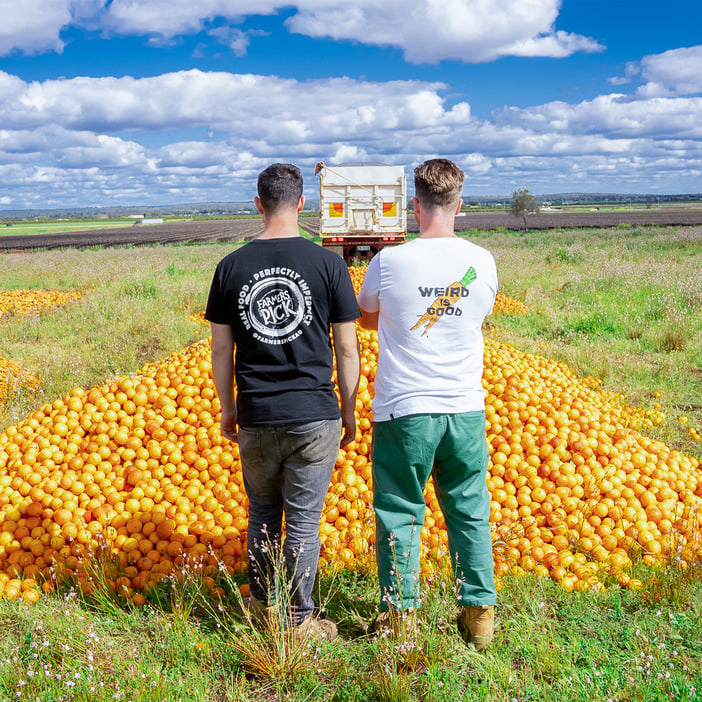
Image: Josh Brooks-Duncan and Josh Ball started Farmers Pick to combat food waste at the source Credit: Farmers Pick
That was four years ago. Since then, Farmers Pick has saved and sold about seven million kilograms of produce, working with 70 farms and delivering to 20,000 active subscribers up and down the east coast of Australia. The business model focuses on seasonal, local produce, cutting out as many supply chain steps as possible.
“The first few years, I think farmers were wary,” Ball laughs. “They were like, ‘What do you mean? For 30 years we’ve been told this food’s no good. And now you want to pay us for it?’ But farmers put their blood, sweat, and tears into their crops, and they want us to eat all the food that they grow. They don’t want to just chuck it in a paddock. It’s devastating.
“We were up in Griffith, which is one of Australia’s big orange-growing areas, and we saw them dumping a massive 30-tonne trailer of oranges. And you just think, that is so much food. And the guys were like, ‘Yeah, we do this every day. All season.’ And that’s just one farm.”
A wildly complex and inefficient agricultural industry, driven by out-of-control consumer expectations and carbon-heavy supply chains, forced to dump truckloads of food to meet arbitrary corporate standards, meanwhile consumers are tossing millions of tonnes of produce into landfill — voluntarily, mind you — where it warms the planet and (ironically) makes growing conditions worse. And kids are still going to school hungry.
“There’s no reason we can’t halve food waste by 2030, but really, that’s a pathetic goal.. What happens to the other half? It’s tragic that our sights are set so low, but you have to start somewhere.” – Ronni Khan AO
Sure, there has been some progress over the years thanks to organisations like OzHarvest. Public awareness of food waste has improved, and supermarkets have slightly relaxed their aesthetic standards, but the needle isn’t really shifting. The Australian government has committed to halving food waste by 2030, in line with the United Nations’ SDG Target 12.3, but Khan isn’t optimistic. “That’s less than 3,000 days away. And we’re nowhere near [that target].”
The thing is that food waste, like so many complex macroeconomic problems, isn’t an Us or Them thing — it’s an Everyone thing. And to ‘solve’, Everyone things take coordination and cooperation and sacrifice from consumers, governments, and profit-driven corporations on a global scale, which (if you’ve looked out of a window in the last four years) you’ll know is unlikely. Then you have to factor in the weird psychological dissonance when it comes to stuff like sustainability. Short version? We’re not stuck in traffic — we are traffic.
“The first problem is that most people don’t accept they’re part of it,” Reucassel says. “We did a vox pop as part of War on Waste, where we put out a massive table of food, over half a tonne, which is the amount thrown out every year by an average family. And people were like, ‘Yeah food waste, it’s a big problem.’ Do you do food waste? ‘Oh no, not in our house, no way.’ It’s fascinating.
“You can ask people: do you like food being wasted? No. Do you like wasting money? No. Do you like doing things that are bad for the environment? No. In every single way, this should be a problem that does not exist. And yet it does, on a massive scale.”
“You can ask people: do you like food being wasted? No. Do you like wasting money? No. Do you like doing things that are bad for the environment? No. This should be a problem that does not exist.” – Craig Reucassel
But there is a silver lining here, which is that problems caused by mass consumer behaviour can also be solved by mass consumer behaviour. In other words, your individual choices matter. All we have to do is make it easy for people to make the right ones. Look at rooftop solar: what was once a niche energy product now accounts for 11.3 per cent of Australia’s grid. Over 3.7 million homes and businesses now have solar panels on their roof, and we’re installing about 300,000 more every year. It’s an example that consumer habits can change, that the market can change, and that people will do the right thing — as long as you incentivise them correctly.
To that end, OzHarvest recently teamed up with researchers at Monash University to answer a very simple question: what’s the easiest thing we can do to help people waste less food? And after crunching the numbers, behavioural scientists found that the average consumer would use up leftovers in the fridge — if they knew how. It’s not a matter of desire, the research suggested, it’s a matter of habit.
“So we launched Use It Up Tape,” Khan says. “It’s a yellow sticky tape — fully biodegradable, printed with vegan ink — that you put on a shelf in your fridge, and it says, ‘Eat Me. Use Me. Pick Me’. The idea is that you move everything that needs to be eaten onto that shelf, so you’ve got a visual reminder not to waste food.”
Use It Up Tape is available free from ozharvest.org (you just have to pay for postage), and the results so far are pretty conclusive. Use It Up Tape is currently in 120,000 homes, from Australia and the Netherlands to Germany, and researchers have found that, on average, it’s helping families cut household food waste by 40 per cent. Not bad for sticky tape.
“If we all work together, there’s no reason we can’t halve food waste by 2030,” Khan says. “But really, when you think about it, that’s a pathetic goal. Halving food waste. What happens to the other half? It’s tragic that our sights are set so low, but you have to start somewhere.
“It’s going to take major systems change, it’s going to take collaboration, it’s going to take advocacy, it’s going to take everything. But I do have hope. We created hunger, and we can uncreate it.”
This article features in the March-May 2025 issue of Rolling Stone AU/NZ. If you’re eager to get your hands on it, then now is the time to sign up for a subscription.
Whether you’re a fan of music, you’re a supporter of the local music scene, or you enjoy the thrill of print and long form journalism, then Rolling Stone AU/NZ is exactly what you need. Click the link below for more information regarding a magazine subscription.



























